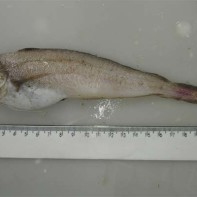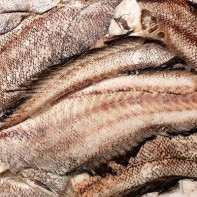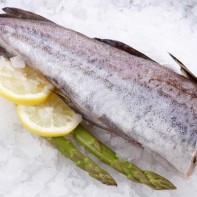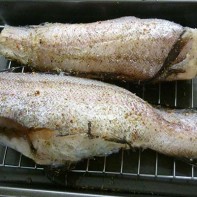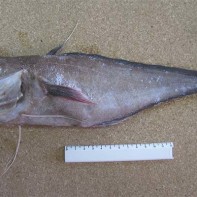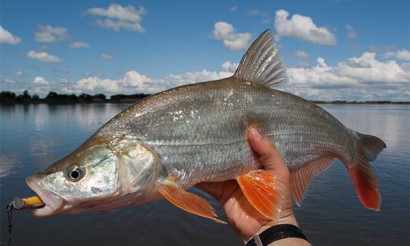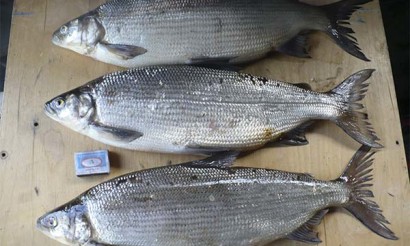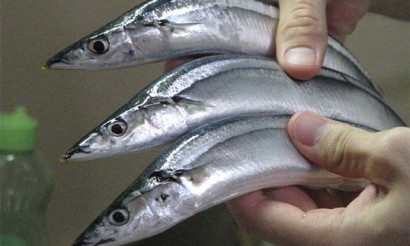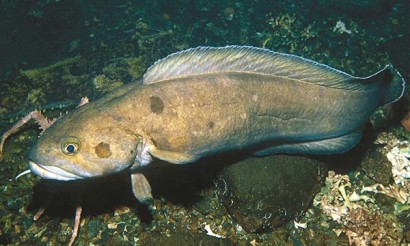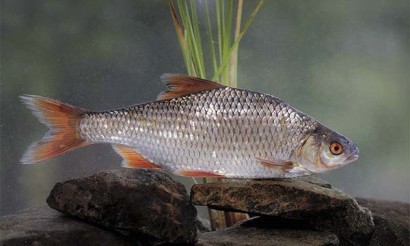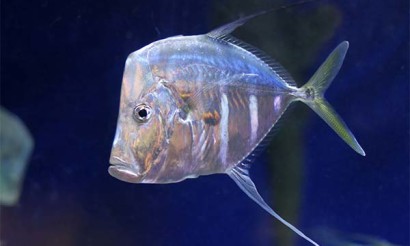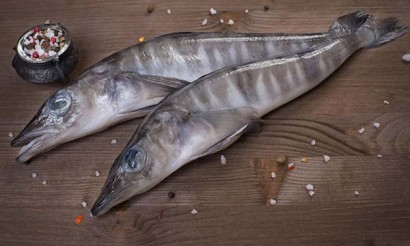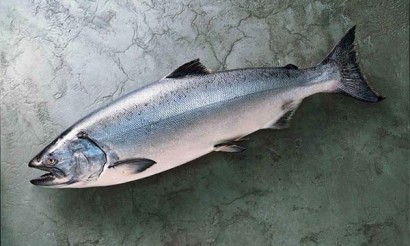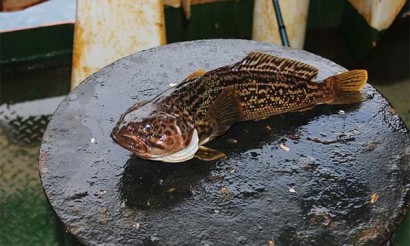Limonella fish: useful properties and recipes for cooking
To talk about the benefits of sea fish and seafood for the human body is probably not necessary. This is really delicious products, which contain many useful substances, trace elements, vitamins. However, about such fish as lemonema, not everyone has heard. Maybe that's why it is not in high demand. But it's time to fill this gap.
- Limonella: what kind of fish, what it looks like and where it lives
- How it looks
- Where does it live?
- What it eats
- Breeding and species status
- Composition and calories
- What is lemonella meat good for?
- Benefits of lemonella caviar
- Harm and contraindications
- How to choose and store
- Where to buy and how much costs
- How to cook lemonella fish deliciously: recipes
- In the oven
- In the frying pan
- In a Multicooker
- Fish cutlet recipe
- Q&A
- What does lemonella taste like?
- Fatty or not?
- Are there many bones in fish?
- Interesting Facts
Limonella: what kind of fish, how it looks and where it lives
Lemonella or limonella belongs to the group of cod fish of the moray family. It is a close relative of the cod, although somewhat different from it. For the sake of the diversity of the home table and inclusion in the diet of tasty, healthy foods, it is advisable to try to cook lemonella. It has a soft texture and white meat, which has almost no small bones. This makes the fish easy to process and easy to cook. That is why, tender and dietary meat can be safely introduced into the diet of small children.
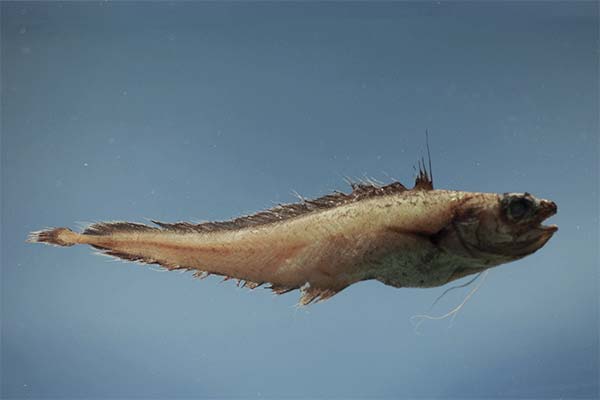
What it looks like
The fish has a long body, somewhat compressed on the sides, of a brown hue with a silvery cast on the sides and belly. On average, the size of limonella is 40-50 cm. However, there are individuals, no more than 20 cm. and, conversely, more than 70. On the size does not depend on the usefulness or harm of the fish. Lemonema head is short, with two large eyes extending beyond the streamlined body.
What distinguishes the lemoneme from the cod and the structure of its internal organs. At the front of the swim bladder are two anterior growths. Between them and the ear canals are connected, indicating the ability of fish to make sounds.
Where does it live
The habitat of the limonella extends to the northern waters of the Pacific Ocean, areas belonging to Japan. As far as the coast of Alaska. It is also found on the territories of the Kuril and Kamchatka Islands. In winter and summer, the lemonella travels quite long distances. But this happens only during the season. Then it stays in its chosen place. In Russia, the lemonella is caught in small, limited numbers. The catch, more often than not, is of an accidental nature.
What it eats
Interestingly, little is known about the diet of the limonella. As it ages, it sinks closer to the seafloor. However, even when the fish is on the surface, scientists have not been able to figure out - what exactly forms the basis of its diet. Most likely it is small crustaceans and mollusks.
Reproduction and status of the species
In the middle of winter, the limonella starts spawning, mostly off the coast of Japan, when one female can give out up to half a million eggs. Once hatched, the fry grow for up to a year and a half. Then they join their congeners. By the age of 5, sexual maturation occurs.
Composition and calories
If we talk about the culinary qualities of limonella, it is a dietary product. There are almost no carbohydrates and fats in the composition, which allows you to include it in the diet of thin people. In 100 grams. meat contains 0 g. carbohydrates, 1 g. fat and almost 17 g. protein. The calories content is 79 kcal.
The fish also contains (per 100 grams of product):
Vitamins:
- B1, thiamine - 0.11 mg;
- B2, riboflavin - 0.11 mg;
- B4, choline - 65 mg;
- B5, pantothenic - 0.237 mg;
- B6, pyridoxine - 0.1 mg;
- B9, folate - 4.9 mcg;
- B12, cobalamin - 1.63 µg;
- C, ascorbic - 0.5 mg;
- D, calciferol - 0.2 µg;
- E, alpha tocopherol - 0.3 mg;
- Retinol - 0.01 mg;
- Niacin, 1.3 mg.
Macronutrients:
- Potassium - 420 mg;
- Calcium - 40 mg;
- Magnesium - 55 mg;
- Sodium - 40 mg;
- Sulfur - 170 mg;
- Phosphorus, 240 mg;
- Chlorine - 165 mg.
Micronutrients:
- Iron - 0.8 mg;
- Iodine - 150 mg;
- Cobalt - 15 mg;
- Manganese - 0.11 mg;
- Copper - 130 µg;
- Molybdenum - 4 µg;
- Nickel - 7 µg;
- Selenium - 15.9 µg;
- Fluorine, 700 µg;
- Chromium - 55 µg;
- Zinc, 1.12 mg.
Monounsaturated and polyunsaturated acids:
- Oleic (omega-9) - 0.08 g;
- Omega-3 fatty acids - 0.2 g;
- Omega-6 - 0.22 g.
What is useful for lemon meat
Codfish meat is perfectly assimilated by the body, allowing it to be included in the diet of children, the elderly, those who suffer from gastrointestinal diseases. Thanks to the presence of vitamin E, lemon is a good antioxidant that can prevent premature aging. B vitamins help to reduce cholesterol levels and allow useful substances to be better absorbed by the body. Also, limonella meat increases iron levels in the blood, which is a prevention of anemia.
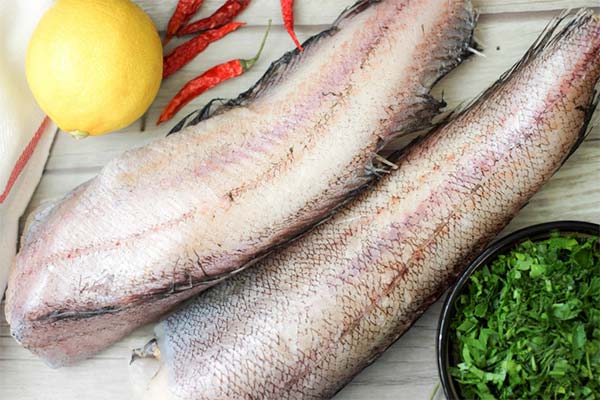
Vitamin PP regulates cholesterol, not allowing it to rise, and has a beneficial effect on metabolism. It also has a good effect on mental activity, as it increases blood circulation in the brain cells. But vitamin PP reduces blood clotting.
It is important to protect human cells from harmful substances and toxins. And, the micro and macronutrients that are in the composition of lemonella cope with this perfectly. They also strengthen human bones and muscles, make it sturdy, strong, provide oxygen to internal organs. And also improve the overall hormonal balance, which is important during stress, pregnancy, breastfeeding.
The benefits of limonella caviar
It is useful for the human body not only the meat of limonella, but also its caviar. Due to the presence of a huge number of minerals and vitamins, the caviar:
- increases the overall tone of the body;
- improves the immune system;
- has a beneficial effect on the eyesight;
- strengthens bone tissue;
- normalizes blood circulation;
- Reduces the risk of thrombosis.
Salty caviar can serve as an excellent remedy for the prevention of atherosclerosis. And also, the caviar of limonella with regular consumption contributes to the production of collagen, which gives the skin velvety and soft, which is very important for women.
Tip! Caviar serves as a great dressing for sandwiches or toppings for tartlets! This dish can also decorate the holiday table.
Harm and contraindications
Particular harm from the consumption of limonella can hardly be obtained. The exception is an individual intolerance of the product. It does not cause intoxication of the body, is hypoallergenic. Therefore, it is recommended for consumption even for allergic people. However, in order not to harm the body, it is necessary to maintain the recommended time of heat treatment.
How to choose and store
In order for lemonema to really benefit the body and please with its unsurpassed taste, it is worth to choose it correctly. When buying it, you need to pay attention to the following:
- It is better to buy fish with the head and see if the eyes are convex and light in color. Cloudy and dry "tell" about improper storage and stale.
- The body of the fish should be smooth and moist, a dry surface is a bad sign.
- The presence of slime on the fish is unacceptable - it indicates spoilage of the product, as well as the presence of foreign spots.
- You can check the freshness of the carcass by pressing the surface with your finger - if it is fresh, the bump will return quickly to its original position. Old fish will definitely leave a trace from a finger.
The presence of ice in the package of fish indicates repeated defrosting and freezing. It is better to refuse such a product! When cooking, limonella turns into a mushy mass and is unlikely to please the delightful taste.
Store fish in the refrigerator or freezer.
Where to buy and how much does it cost?
The cost of fresh fish is not high, and comparable in price to cod (200-250 p. per kg.). Therefore, people with different income levels can safely include this healthy product in their regular menu. You can buy lemoneme at the food market, in places close to the Pacific waters. That's as far as fresh fish is concerned. Frozen carcasses or fillets are available at many major supermarkets nationwide.
How to cook lemonella fish deliciously: recipes
Limonella can be cooked in a variety of ways, using an oven, a multicooker and even an ordinary frying pan. It is almost impossible to spoil a dietary dish. But it can be made even healthier. When cleaning the fish, be sure to remove the black film, which gives the meat a bitter taste - this is the only rule that should be adhered to when cooking. Lemonema is easy to clean because it has small scales, which are very small on the surface. This is characteristic of all cod fish. You can easily isolate fillets from the lemonella, which will make the finished dish even more exquisite.
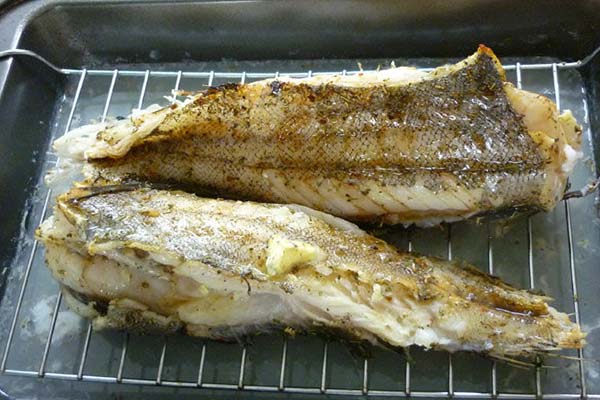
Warning. Limonella is a low-fat fish, which is not suitable for first courses. It does not make a rich broth!
In the oven
Fish in the oven with vegetables turns out very tasty and appetizing.
Ingredients:
- one fish carcass;
- carrot;
- onion;
- medium tomato or two tablespoons of tomato ketchup;
- a little vegetable oil;
- bay leaf - three pieces;
- spices, ground black pepper, salt.
The fish is cleaned, fins removed, gutted and thoroughly washed. Separate into several large pieces. Salt and pepper them, roll them in spices. But do not go overboard with spices either! Grate onions and carrots and fry until soft. Fish steaks are spread out on a baking tray covered with foil. Put a bay leaf and a vegetable mixture on each piece. Put sliced tomato or ketchup. Cover with foil and place in the oven for 40 minutes at 180 degrees.
If you want to get a delicious crust, remove the foil 10 minutes before the dish is ready. On top of the finished fish is sprinkled with fresh dill and parsley greens. You can also bake lemonema in a special sleeve.
Pan-Fried
Pan-fried is a classic of the culinary genre, concerning the preparation of any fish.
Ingredients:
- One fish carcass;
- 2 chicken eggs;
- a little bit of wheat flour;
- vegetable oil for frying;
- spices, salt.
Clean the fish, gut it and cut off its fins. Rinse well and cut in small portions. Salt, pepper and sprinkle with spices. Whisk eggs in a bowl and put fish pieces in it. Leave it for about 10 minutes. In a separate bowl prepare flour for breading and roll fish in it. Fry in hot vegetable oil until browned.
Caution. Before cooking the frozen limonella should be completely defrosted in a natural way. Best to do this in the refrigerator and then let the fish lie at room temperature for an hour!
In the multicooker
Multicooker is an indispensable modern assistant in the kitchen of every housewife. It will help to cook and wonderful fish, which can be eaten even when losing weight.
Ingredients:
To get a dish to get rid of excess weight, it is better to cook fish on steam. Multicookers have a special bowl for steaming. Pour water on the bottom, and in the bowl for steam put dill stalks. The prepared fish is cut in portions, salt, pepper and spices are added. Then pour freshly squeezed lemon juice over it. It is better to leave the fish to marinade for 10 minutes. On the dill in the bowl of the multicooker put pieces of fish, close the lid and put in the mode "steam". Just 15-20 minutes, and the healthy dish will be ready.
To prepare a full lunch or dinner in the multicooker, you can put chopped vegetables on the prepared pieces of fish. Tomatoes, onions, broccoli, grated carrots will do. This will additionally enrich the finished dish with vitamins and fiber.
Recipe for fish cutlets
Juicy and tender fish cutlets are the favorite dish of many gourmets. But in order for it to really please with its excellent taste, it is necessary to follow the correct cooking technology and recipe.
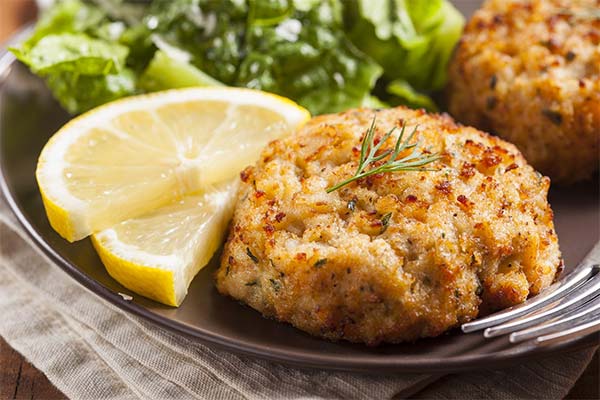
Ingredients:
- 600-700 g. fish fillets;
- 50 ml. milk;
- onion;
- carrot;
- bread or loaf;
- egg;
- 150 gr. butter;
- dill;
- breadcrumbs;
- salt, pepper, spices.
Soak bread or buns in milk and leave for 5 minutes. Grind the fish on a meat grinder, along with onions, carrots, bread. Add the egg, salt and spices, dill, mashed in butter. Knead the stuffing very carefully and form small round cutlets. Fry in hot vegetable oil. Frying time - 5 minutes, no more. Otherwise, the cutlets will lose their juiciness, become stiff and dry.
Instead of butter, you can grind fresh lard into the mince, which will make the cutlets juicy. Of course, this option is not suitable for thin people, but without a fat component cutlets from lemonema will turn dry.
Warning! If the mince falls apart, getting liquid, you can add small oat flakes to it. It is necessary to wait a little, so that they will swell, and the minced meat became thicker.
Q&A
The following question answers will give you a better understanding of what lemonella is all about.
What does limonella taste like?
In taste, the fish resembles cod. It has a rich, bright flavor and a very pleasant aroma when cooked properly.
Fatty or not?
This is a completely non-fatty fish, as there is no fat in its composition. Therefore, to eliminate dryness, limonella can safely be combined with roasted vegetables, vegetable or butter and even pork fat, adding it to the stuffing.
Are there many bones in fish?
There are almost no bones in fish - a large vertebral bone is all. There are no small bones. This is very convenient for feeding small children and cooking fillets.
Interesting facts
An interesting fact is this:
- Even people who do not like fish find the taste of limonella bright and original.
- At nighttime, small, young specimens can be seen on the very surface of the water of the Pacific Ocean.
- Lemonella is recommended for consumption even by pregnant women and nursing mothers.
- Doctors are definitely "for" the consumption of this codfish by people suffering from diabetes, because it does not contain carbohydrates that increase the level of glucose in the blood.
- You should not eat limonella in its raw form.
- You should not eat fish caught in a dirty reservoir of unknown origin.
- Today this fish is bred in Voronezh and Krasnodar reservoirs, as well as in Ukraine.
- At 2 and 3 years of age, some individuals can reach a weight of 5 kilograms.
- To get an unusual, original flavor of fish, you can marinate it in soy sauce or wine vinegar, and add white wine during cooking.
- Very tasty lemonema, fried in a batter, which can be made on the basis of beer or mineral water.
«Important: All information on this site is provided solely for introductory purposes. Before applying any recommendations, consult a specialist. specialist before applying any of the recommendations. Neither the editors nor the authors are liable for any possible harm caused by materials."

